What you snack on is an important part of any healthy and balanced eating plan. This becomes even more crucial if muscle gain is your major goal. Unfortunately, snacking has a negative connotation, as many people just go overboard with poor choices. eedless snacking can result in the consumption of too many unnecessary calories, carbs, sugar and fat. As a result, your fitness goal can get affected.
For that reason, mindful and nutritious snacking is requisite. A snack with high-protein, complex carbs, and a small amount of fat is the best combination. Here, protein satisfies your hunger and keeps you full for longer. And, getting that protein fix at home is still manageable. However, what happens whenyou’re out at the office all week or traveling? Not to worry, here are some easy-peasy, grab-and-go high-protein snacks for muscle gain, just for you.
15 Best High-Protein Snacks to Build Muscles
Many plant and animal-based foods such as eggs, chicken, fish, seafood, pulses, legumes, nuts and dairy contain protein. But the quantity and quality of protein in all the foods are not the same. So, by eating a variety of food during the day you can not only meet your protein requirements but also get other nutrients for good health. Here are the best muscle-building snacks that are healthy and handy.
1) Eggs
Eggs are a phenomenal source of high-quality protein. One average egg contains 6-7 grams of protein, depending on the size. Eggs are lower in calories but a great source of choline, B vitamins, iron, vitamins A, D, E and antioxidants. They are quite filling, keep you satisfied until the next meal and prevent you from overeating. These properties undoubtedly make eggs a most nutritious and versatile choice for a snack.
How to Use: You can boil, poach, scramble or bake eggs. You can also make an omelet and eat it the same way or combine it with different veggies for more nutrients.
2) Canned fish
Canned and oily fish like salmon, tuna, and sardines are excellent protein sources and can be an ideal snack at home or on the go. A 100 gm serving can provide up to 20-28 gm protein. These fish are also rich in heart-friendly omega-3 fats, vitamins B6, B12, D, magnesium and selenium. Their anti-inflammatory properties can lower the risk of many health conditions such as depression, certain cancers, stroke and heart disease.
How to Use: You can steam, grill or bake it after seasoning. You can also combine fish with veggies or healthy carbs like whole-grain bread, rice, quinoa etc
3) Lean Poultry (white meat)
If you are on a journey to lose weight or limiting your calorie and fat intake for any reason then prefer skinless white meat (e.g. breast) over dark (red) meat cuts. Lean meat is an exceptional source of protein and important nutrients. Every 100 gm (3.5-ounce) serving of cooked chicken or turkey provides approx 23-32 gm of high-quality protein, contains no carbs and is low in calories and fat.
How to Use: Meat can be cooked in a variety of ways - prefer low-fat cooking options roasting, grilling, sauteing, boiling, baking, air-fry, and steaming.
4) Peanut or Nut Butter
Peanuts and other nut butter such as almonds, pistachios, walnuts or hazelnuts can be a great source of protein in your diet. A serving of 30 gm (2 tbsp) provides approximately 8 gm of protein and is also a great source of other essential nutrients such as vitamins B, E and magnesium. Eating peanut butter in moderation can aid weight loss, boost heart health, maintain blood sugars and reduce the risk of breast disease.
How to Use: You can pair it with an apple, banana, celery stick or slice of multigrain bread for a wholesome and portable protein snack.
5) Greek Yogurt
It’s a tasty, healthy, convenient and power-protein snack to build muscles. A serving of 245 gm (3 ounces) low-fat variety contains about 24 gm of protein, twice that of regular yogurt. In addition to protein, it is also a great source of gut-friendly bacteria, calcium and B vitamins. However, flavored varieties contain extra sugar, carbs and calories. Therefore, prefer a plain one and add healthier ingredients of your choice.
How to Use: To make your customized cup of Greek yogurt more tasty, nutritious and filling - you can addrolled oats, fruits or nuts of your choice.
6) Nuts
They are super tasty, crunchy, healthy, easy to munch and a great source of plant-based protein. Some of the nuts you can choose from are almonds, pistachios, walnuts, cashews, peanuts, pine nuts, brazil nuts, and hazelnuts. All nuts are high in calories, however, they contain heart-healthy fat and cancer-preventing antioxidants. A handful of nuts or a serving of 30 gm roughly contains 4-7 gm of protein plus other essential nutrients.
How to Use: You can just dry roast or preferably soak them overnight to reap more benefits and improve digestibility. You can combine them with fruit, milk, yogurt or seeds too.
7) Trail mix
It’s a winner simply because it has the double power of nuts and seeds. This fusion makes it an exceptional source of protein, fibre, healthy fats and other vital nutrients. Instead of market-bought mixes (which can contain M&Ms, or other high sugar ingredients), make your version by picking your favorite nuts and seeds in almost equal proportion (say 1 tbsp each). Plus, to make it even more tasty and crunchy, you can add some dried fruits such as prunes, raisins, apricots etc. These homemade mixes are easy to make, store, grab and munch for that post-lunch peckish.
How to Use: All you need to do is take a handful of the super-mix and enjoy your yummy yet healthy and fulfilling treat.
8) Hummus
Hummus is a delicious, wholesome and traditional middle eastern dip or spread made from chickpeas. It also has olive oil, tahini, lemon and spices for that flavorful bite. You can accompany this dip with a variety of food. A serving of 30 gm hummus provides about 90 calories, 2 gm protein, and 3 gm carbs. It is also a rich source of magnesium, iron and folate.
How to Use: You can use it as a spread on whole-grain pita bread, chips or crackers. However, it goes best with veggies like cucumber, carrot sticks, radish, bell pepper, broccoli etc.
9) Cheese
Low-fat cheese is a great option for an evening snack. For cheese, string or portioned cheese are better as they have a controlled portion size. Each serving (1 stick, oz or 28 gm) provides you with approx 7 gm of protein and a good amount of calcium. Some varieties of cheese such as blue cheese, mozzarella, feta, parmesan, swiss and cheddar are comparatively healthier options. Moderate amounts of cheese can help you shed extra kilos, improve bone health and immunity and prevent heart disease.
How to Use: You can spread it over your whole grain cracker or bread. You can also deck up your boring salad with fresh feta or parmesan cheese.
10) Beans and Legumes
Beans and legumes are commonly eaten plant-based protein sources worldwide. The most common examples in this category are chickpeas (garbanzo), green gram, peas, kidney beans, black beans, pinto or navy beans. A cup (cooked) from this category yields you approx 8-20 gm of protein (depending on the option) and is also a great source of complex carbs, fiber, B vitamins, Iron, copper, manganese, zinc and magnesium. They are affordable, fulfilling, easy to cook and have numerous health benefits from weight management to better digestion to blood sugar regulation.
How to Use: You can either roast, boil, cook, sprout, bake or air-fry them. Also, add some veggies and fruits along with some herbs and spices and you’ll get your hearty bowl ready in no time.
11) Cottage Cheese
It’s a fresh and unripened product formed through curdled milk. Cottage cheese has a mild flavor and smooth and creamy texture. One serving of ½ cup (109 gm) gives you around 12 gm of protein, 4 gm carbs and 90 mg of calcium. Cottage cheese is high in protein and low in calories, this combination can aid weight loss, increase muscle gain, prevent insulin resistance and promote bone strength.
How to Use: You can use it in salads, baked goods, wraps or on toast as a filling. You can also blend it into smoothies or simply eat it in grilled or roasted form.
12) Tofu / Tempeh
Tofu is a curd made with soybean pressed into solid cubes. Whereas, tempeh is a probiotic-rich fermented product. Both are among the best protein sources for vegans and vegetarians. A 3 oz (or 84 gm) firm serving of tofu gives you approximately 9 gm of protein, 4 gm of fat, and 2 gm of carbs. Owing to its compact nature, tempeh contains almost double or more nutrients as compared to tofu.
These soy products are great sources of iron and calcium and low in calories which makes them a perfect and filling snack to be enjoyed in every type of diet.
How to Use: These soy foods are easy to make, nutritious and versatile and can be eaten in a variety of ways by adding veggies, fruits, eggs, nuts, cereals etc.
13) Seeds
Seeds are super healthy as they contain nutrition to support a new life (plant). They are an excellent source of many nutrients such as plant protein, complex carbs, healthy fat, vitamins, minerals, fiber and powerful antioxidants. The beneficial compounds in seeds can improve certain health conditions such as blood sugars, blood pressure and cholesterol. They are also good for your skin and digestive health.
How to Use: You can either soak them overnight or dry roast them on low flame and stock them for future use. You can also sprinkle them over your salads, cereals, and smoothies.
14) Protein bars or balls
It is the easiest and yummiest way to consume a remarkable amount of protein. But all bars are not the same, most readymade bars contain added sugars, unhealthy ingredients and unnecessary calories. However, you can make your personalized batch of protein-rich bars or balls with healthier alternatives and keep it handy to eliminate that evening slump.
Per serving of bar or ball can give you 10-20 gm or more protein depending upon the ingredients used.
How to Use: You can mix the ingredients like tahini, different seeds, nuts, protein powder, and rolled oats with natural sweeteners like apricots and dates and roll it in the shape of a ball or a bar.
15) Smoothies and Shakes
If you are looking for something super quick, refreshing, tasty, filling and nutritious snack, then look no further, a glass of protein smoothie or shake is your answer. However, avoid those store-bought smoothies, as they are full of excess calories and simple sugars.
Instead, you must try this delicious plant-based blend of protein and caffeine, known as Protien Coffee. It’s an immensely nutritious drink that has the rich taste of coffee and the power of pea and rice protein. It is an all-natural, low-sugar, low-carb formula that offers numerous health benefits including enhanced mental alertness, workout performance, muscle building and weight management.
Besides being the perfect post-workout choice, it also provides a quick, convenient and satisfying solution to your sluggish early evenings and those undeniable hunger pangs.
Every serving nourishes you with 13 gm of high-quality protein and has the goodness of Ashwagandha and other nutrients such as iron and calcium.
How to Use: Just take a jar and fill it with your favorite milk or cold water, add Awesome Coffee protein powder and just shake!
What are the Benefits of High-Protein Snacks?


Protein is a macronutrient, absolutely crucial to your health. From tissue repair to building immunity to providing energy, protein is the key player in the body.
- Preserve muscle mass and bone density: When good protein intake is coupled with exercise, it increases muscle mass and strength. Protein is also good for your bones and reduces the risk of fracture or osteoporosis, as you age.
- Aid weight loss and management: Higher protein promotes weight loss by increasing metabolism, preventing unhealthy cravings and reducing appetite and hunger.
- Good for heart health: Good protein intake is also associated with lowering blood pressure and cholesterol - major risk factors for heart and kidney disease.
- Improve other health conditions: High protein consumption also reduces inflammation, regulates blood sugar levels, improves metabolic health, helps better recovery and increases longevity.
Takeaways

Protein is the building block of life. While including protein is essential for muscle growth, you can’t take all the protein in one go. Therefore, dividing your protein requirement into all the major meals and 1-2 small snacks is imperative to build muscle and achieve your daily protein goals. Consuming protein in main meals is still feasible, however, getting good protein in the snacks could be tricky for some.
Therefore, we’ve highlighted the top high-protein snacks for muscle gain for your quick reference. Every single option has its unique benefits, unmatchable taste and multiple ways of consumption. You can pick and choose as per your convenience, availability, preference and dietary requirements.
Protein is indeed your true friend in your muscle-making journey, anyway, it’s not the only factor. Along with a balanced diet, consider all the aspects of a healthy lifestyle. However, with these scrumptious protein snack ideas at hand, you’re already ahead of the game.





















